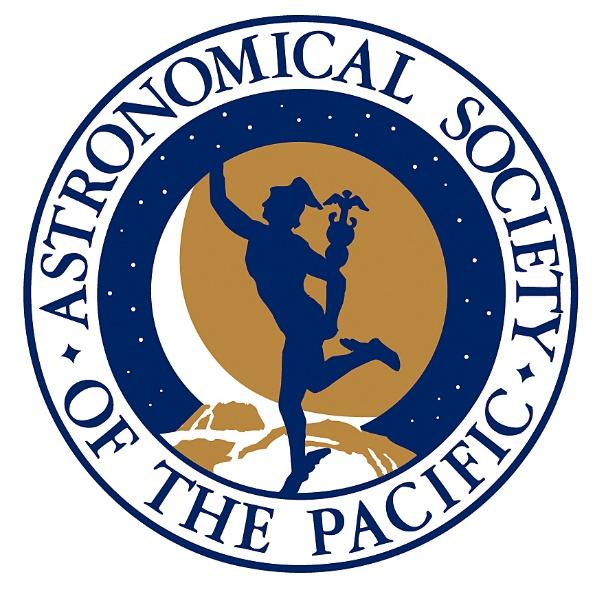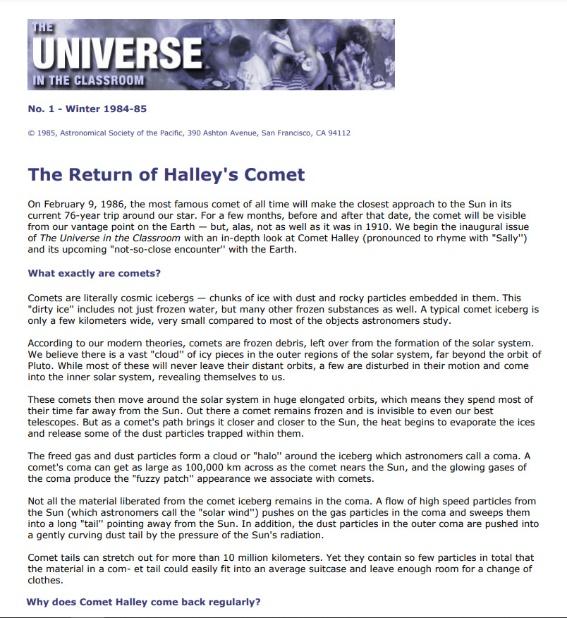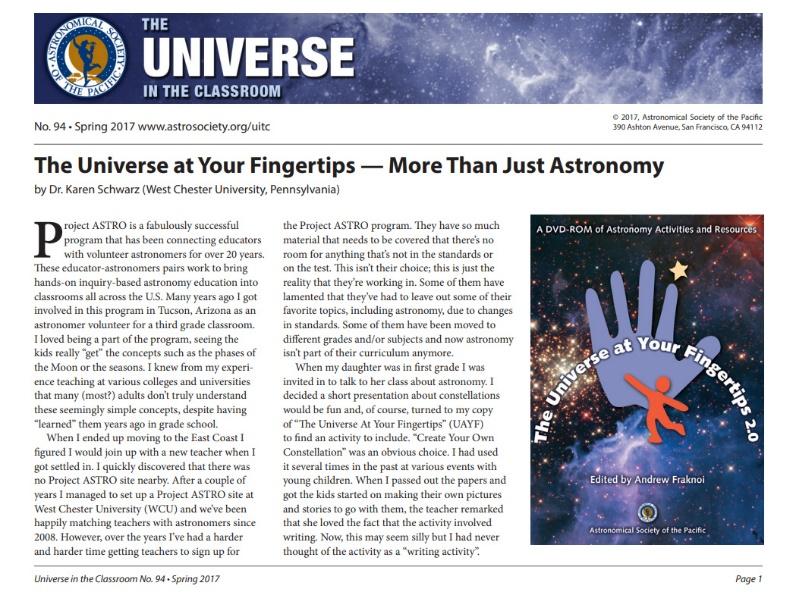"The Universe in the Classroom" Newsletter Archives
Andrew Fraknoi Fromm Inst./U of San Francisco
Welcome to the AAS Education Blog! This post is part of a biweekly series of blog posts from astronomers and educators in the extended AAS community, curated by the AAS Education Committee. Subscribe here to receive future posts directly into your inbox; also follow us on Twitter. We welcome feedback and topic suggestions, as well as guest article submissions! — AAS Education Blog Editors
The Astronomical Society of the Pacific (ASP), whose main orientation is toward astronomy education and public outreach, was founded a few years before the AAS on the West Coast. The ASP’s membership includes not just astronomers, but people in all walks of life with a serious interest in astronomy. In recent decades, the ASP and the AAS have worked together on a number of outreach projects where they had mutual interests, so some readers may be familiar with it.

When I took over as the ASP’s executive director in 1978, their Board charged me with expanding its reach to new audiences — beyond the professional and serious amateur astronomers who had made up their traditional membership. One group I especially wanted to focus on was K-12 teachers, who were often afraid to teach astronomical topics because they had little training and few resources in the field. Yet, within the astronomy education world at the time, there was a growing movement to develop and create such K-12 hands-on materials.
We soon added an experimental workshop for teachers to the ASP’s annual meeting roster, calling it “The Universe in the Classroom.” Each summer, we would host a two-day session where 50 to 150 teachers (at first, mainly from the meeting city, but later, with more publicity and funding, from all over the country) would learn the astronomical subject matter, practice hands-on activities, and discuss how they could add a bit more astronomy to their already crowded science curriculum.
By the early 1980s, these workshops became a regular part of each ASP meeting and we routinely received inquiries about them from astronomy educators (and even teachers in other fields). It occurred to me that we could serve a lot more teachers — many of whom did not have the resources to attend an ASP meeting — by developing an ongoing publication for K-12 astronomy teaching. It made sense to call this newsletter by the same name as our workshops. And so, in 1984, “The Universe in the Classroom” newsletter was born.
At the time, the big sky event everyone was planning for was the return of Halley’s Comet in 1985-86. So, naturally, the inaugural issue of the newsletter was devoted to the famous comet and how to learn and teach about it. Subsequent issues tackled other subjects likely to come up in the school curriculum, including the ongoing exploration of the planets and moons in our solar system, the launch and repair of the Hubble, the nearest stars, the phases of the Moon, the constellations, and the reasons for the seasons.


Each issue also featured a classroom-tested, hands-on activity and a list of additional resources for finding out more about the subject matter covered in that particular newsletter. Some of the activities we first published in Universe in the Classroom went on to become part of other projects, and would be reprinted widely. One of them, “Create Your Own Alien,” was adopted one year as a national astronomy activity for Canada. It encouraged students research other worlds we have discovered and then to imagine life forms that might survive on them.
The circulation of the newsletter grew slowly, as we held more workshops and knowledge of it spread by word of mouth. (This was, of course, before the Internet.) As the 1980s turned into the 1990s, the newsletter was going out to about 10,000 educators and eventually was being translated into several languages.
Writing, soliciting articles, and editing each issue eventually became the responsibility of several members of the ASP education staff, including Suzy Gurton, Mike Bennett, Scott Hildreth, Brian Kruse, Greg Schultz, and others. Sometimes the executive directors who followed me stepped in and had an idea for an issue as well.
Here is sampling of the topics covered in selected issues to give you a sense of the breadth and scope of the newsletter:
- 92. Recent Lunar Science Discoveries and an Opportunity to Celebrate Them
- 91. Cosmic Geometry and the Curvature of Space
- 84. Energy Budget: Earth's most important and least appreciated planetary attribute
- 82. A Human-Powered Orrery: Connecting Learners with the Night Sky
- 77. The Drake Equation: 50 Years of Giving Direction to the Scientific Search for Life Beyond Earth
- 74. A Silent Cry for Dark Skies
- 71. How Fast Are You Moving When You Are Sitting Still?
- 68. Our Solar Connection: A Themed Set of Activities for Grades 5-12
- 62. Egg Balancing at the Equinox: Good or Bad Astronomy?
- 59. A Good Definition of the Word “Planet”: Mission Impossible?
- 56. An Ancient Universe: How Astronomers Know the Vast Scale of Cosmic Time
- 39. Biography of a Star: Our Sun’s Birth, Life, and Death
- 33. What If the Moon Didn’t Exist?
- 23. Cosmic Collisions
- 12. The Moon: It's Just a Phase It's Going Through...
- 11. Horoscopes Versus Telescopes: A Focus on Astrology
The good news I have to tell you is that the ASP has generously made the first 95 issues of the newsletter available free to anyone on the web (including a number of translated issues in Spanish and French). You can read, download, or distribute these issues for any nonprofit, educational purpose. If you or others at your institution are working with K-12 teachers, or pre-service teachers through your School of Education, you can find the newsletters online.
Andrew Fraknoi is celebrating his 50th year of working for the ASP in 2023, in roles that went from volunteer, to executive director, to senior educator. Besides the teachers’ newsletter, he also founded ASP's Project ASTRO and Family ASTRO programs, its “Cosmos in the Classroom” series of symposia on teaching Astro 101, and its web-based “Astronomy Beat” column on astronomical innovations. For more on his work, see http://fraknoi.com.

